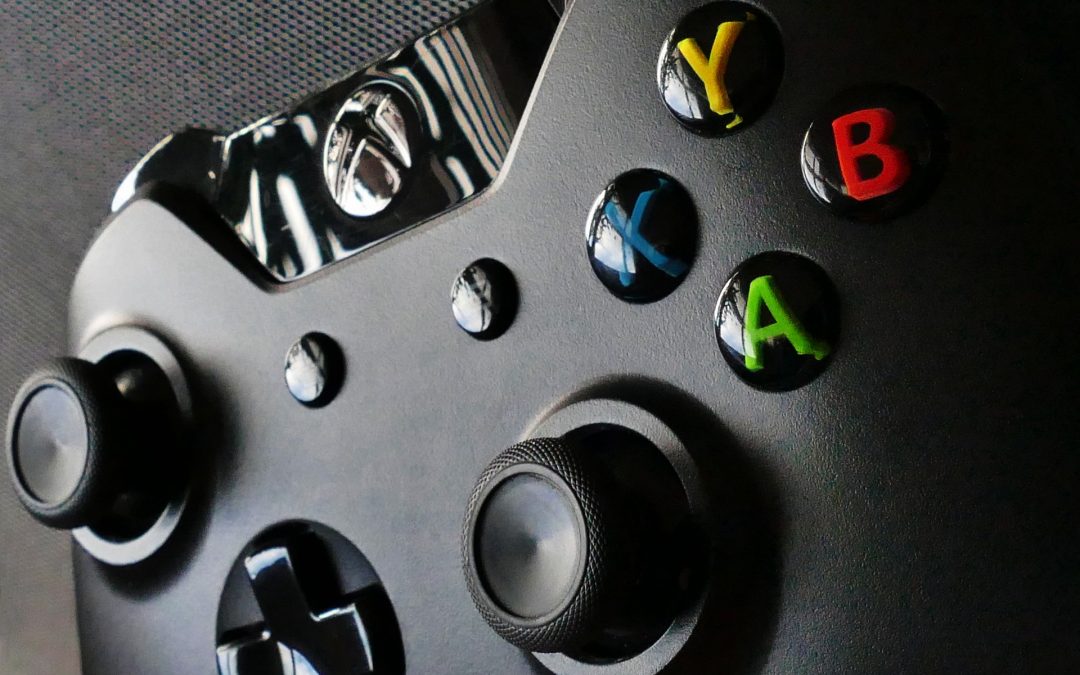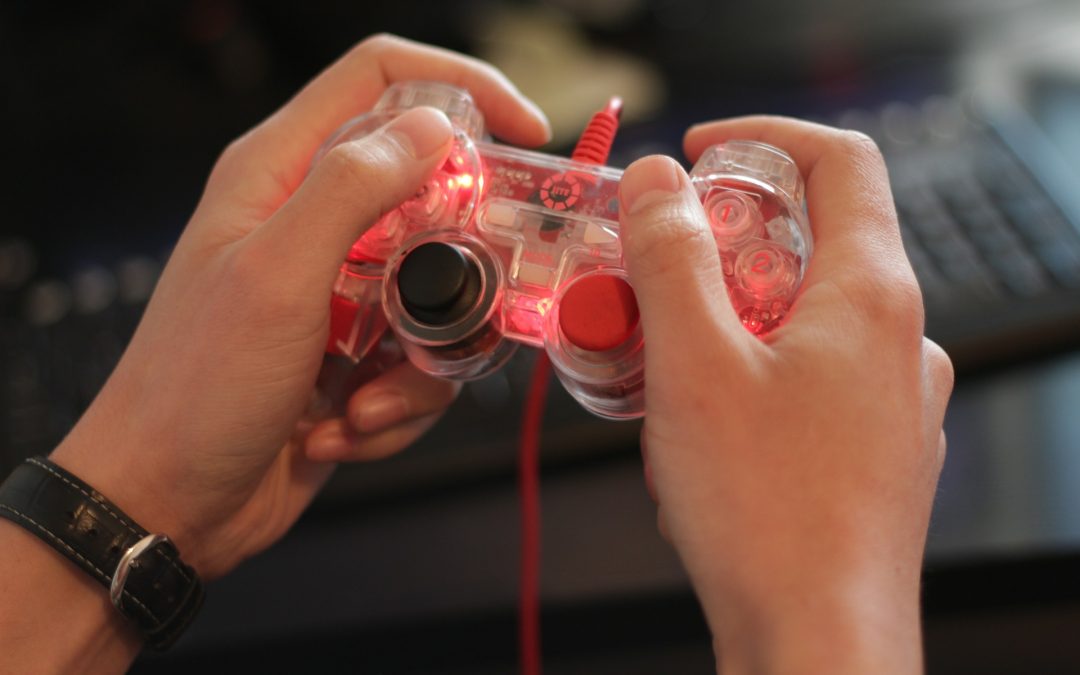
Wearable Technology for the Holiday Season
As the holidays approach, it’s not just mistletoe, snow, and eggnog on people’s mind — it’s the anxiety-inducing prospect of gift-giving. What should you buy? What should you ask for? Socks, again? Or something more exciting? Whether you’re a confident shopper or not, it can be difficult to come up with good ideas year after year.
New technology can make a superb gift both to wrap and unwrap, but it can also be risky. Tech advances fairly rapidly, meaning most products have a shelf life that often ends with the next big upgrade. But if you’re constantly waiting for the “best” tech product, you’ll be waiting forever.
This seems to be the case with wearable technology. People sit around waiting for smartwatches to get smarter and end up missing out on all the great things they have to offer.
Maybe this is the year to embrace wearable technology, or maybe it’s not. Whatever the case, I submit to you several ideas that I think would make great gifts this holiday season.
FitBit Flex 2 & Charge 2
With the New Year comes new goals, of which fitness is often one. FitBits make great gifts for close family members or loved ones that have expressed an interest. The newest versions are even better than the last: the FitBit Charge 2 now includes cardio monitoring and guided breathing; the Flex 2 is now smaller, more stylish, and water-resistant.
Samsung Gear S3
Samsung Gear is less about fitness than it is style and efficiency. The release date and pricing have not been released yet, but it will likely hit the shelves before the holiday. The S3 will be the first device to connect to high-speed LTE networks from its carrier. With the look of a luxury watch and the function of a cellular companion, word has it the watch will have a four-day battery life compared to the Apple Watch 2’s 18 hours.
Sony PlayStation VR
Transitioning from the wrist to the head, one can’t talk about wearable technology anymore without mention of virtual reality (VR) and augmented reality (AR). Sony’s PlayStation VR, released on October 31, has a 5.7” display and a 100-degree field of vision.
Microsoft HoloLens
On to AR, the Microsoft Hololens has been the talk of the tech world for some time now, but has yet to become commercially available. That all could change between now and the end of the year. The HoloLens overlays “holograms” onto your field of vision and lets you interact by tracking your head and hand movements.
These are just a few of the up-and-coming wearables in the tech world. In my opinion, a high-tech holiday season is a happy one. And if you can’t have a white Christmas, you might as well have a wearable one.

Google Opens Up Machine Learning Tools to Businesses in Beta
Google has been on top of cutting-edge technology since its now-ubiquitous search engine rose to prominence. You may or may not have noticed, but the search engine has gotten smarter: it learns from your behavior and alters your results based on search trends and location.
Essentially, Google is the king of algorithms. And guess what? Its machine learning algorithms can belong to your business, too. Recently, Google opened its Cloud Machine Learning platform to all businesses in public beta. Essentially, it allows businesses to train their own models at a faster rate using Google’s system — just a few hours compared to days or more.
Google, now part of conglomerate umbrella Alphabet, is much more than a search engine now, so this service has little to do with your daily queries. Still, it encompasses what we’ve come to expect from Google: speed, intelligence, and constant improvement. That is machine learning in a nutshell, too.
So, how can businesses utilize Google’s Cloud Machine Learning? We can take one example for starter’s: Airbus Defense and Space. This company used the system to automate the process of detecting and correcting satellite images that contain imperfections, like cloud formations, for example.
According to Mathias Ortner, the company’s Data Analysis and Image Processing Lead, “Google Cloud Machine Learning enabled us to improve the accuracy and speed at which we analyze the images captured from our satellites. It solved a problem that has existed for decades.”
More problems can be solved with machine learning — this only scratches the surface. Google has launched two separate services: their Machine Learning Advanced Solutions Lab, which allows businesses to work with Google engineers to solve complex problems, and the Cloud Start program, which offers educational workshops to teach them the fundamentals.
Considering it was Google’s engineers that worked with Niantic before the launch of Pokemon Go, an opportunity to work with the tech giant could definitely be transformative for many. With more businesses in the machine learning game, more customers across the board will benefit from smarter services geared to get even smarter over time.

An Inside Look at The Gatorade Science Sports Institute’s Newest Satellite Lab
Gatorade is more than just a beverage that makes TV athletes sweat blue. The brand has long been associated with sports, science, and wellness, as is evidenced by the Gatorade Science Sports Institute. The Institute and its newest satellite lab in Florida are proof of Gatorade’s continued dedication to athletic innovation.
The Gatorade Sports Science Institute (GSSI) was founded in 1985 with the mission of “helping athletes optimize their health and performance through research and education in hydration and nutrition science.” In partnership with researchers and universities, they study the effects of nutrition on athletes before, during, and after exercise.
So, what have they been up to since foundation 31 years ago? GSSI has researched exercise, nutrition, and sports equipment using the latest tools in physiology, biochemistry, and sensory response. Their results have led to superior formulations in taste and functionality. GSSI has also partnered with physicians, scientists and athletic trainers to establish a Field Testing Program to study the effects of electrolytes on athletic performance.
In other words, GSSI scientists study and develop sports nutrition and hydration. This translates to improved Gatorade products and a wealth of scientific findings to back them up.
GSSI has expanded beyond its headquarters in Barrington, Illinois in recent years, having opened up satellite labs in the UK and most recently, Bradenton, Florida. Some lucky media insiders were able to get a tour of the Florida satellite lab at IMG Academy just this month, and their account shows off the innovative work behind the scenes.
Sport Techie brings us exclusive photos and videos from the GSSI satellite lab, where they sampled new Gatorade products and the technology used by GSSI and its athletes. This included the BodPod, an air displacement plethysmography test that determines body composition for athletes of all ages; the Fuel Profile Test, which evaluates of how an athlete uses energy across a range of exercise intensities; and the Gx sports fuel customization platform, which includes a bottle with flip cap, pods with Gatorade formula and additional tech to provide athlete fueling recommendations.
GSSI shows the amazing ways in which sport technology can monitor our health and maximize athletic performance. Ultimately, their research should help athletes understand what their bodies need to keep healthy, strong, and moving.

An Olympics for E-Sports? Just You Wait
The rapid growth of the gaming industry in recent years has turned many people into power players. We live in a new era of competition where video games and virtual reality gaming experiences are part of modern day culture, encouraging people to develop certain skills until they achieve a level of mastery.
Now, a company is launching an Olympic Games specifically for the $1 billion e-sports gaming industry, according to CNBC. Competitive gaming tournaments where participants play in teams to win medals may soon become the norm.
According to CNBC, the International eGames Group will be hosting the first ever e-sports Olympics in South Korea for the 2018 Winter Olympics. This will be a competition to earn medals and take home the gold for the participant’s country. National qualifiers for the 2018 Olympics will be held through 2017. Professional gamers from around the globe will be practicing their gaming skills and the event is expected to attract a large crowd.
E-Sports Gaming Culture
The concept of playing video games at a professional level is not something new. Until now, organizations like the International e-Sports Federation (IeSF) have been hosting competitions in different countries to participate in world-renowned tournaments. Gamers play games like Street Fighter, Starcraft II and League of Legends, according to Mashable. The IeSF took the lead on pushing for E-sports to be part of the Olympic Games.
Multiplayer gaming competitions and tournaments have a history that can be traced back to the 1980s. Atari’s Space Invaders Tournament is one example of a highly publicized event that encouraged gamers to get out and compete at a professional level. Several other tournaments fueled by the rapid growth of PC games in the 1990s spurred the trend, according to The Market for Computer & Video Games.
Major League Gaming (MLG) was established in 2002 and since then, we’ve been seeings several competitive gaming tournaments and virtual arenas making their way into mainstream culture. In 2014, more than 11 million people simultaneously watched the 2014 League of Legends World Championship event; 71.5 million people watched pro-gaming in 2014, according to Red Bull, reports MCV.
While gamers around the globe are in full favor of making their mark on the world at the Olympic level, there is still ongoing debate as to whether playing a video game — and even the skillet to win a game — qualifies as a real sport. Many people are questioning whether the whole tournament is more like a competition rather than a sport someone would train for since there is no real physical component or rigorous training program involved. Others argue that chess was once considered to be a sport, and so gaming may fall under the same category.
Professional Gamers On the Rise
While some may not take professional gaming seriously, the process of becoming a pro does require many hours of practice and skills development. Many professional gamers join online forums to learn tips and strategies for playing different games. There are dozens of online tournaments for those who want to brush up on their skills or continue developing their skills without the pressure of having to win a medal. Major League Gaming, for example, hosts online GameBattles where players can participate for free and win cash.
Online tournament enrollment requirements vary by team and most are designed for team players which means gamers need to seek out people they want to play with and not just compete with. Some companies that host tournaments charge a fee for entry or participation. And, there is a wealth of information online for studying the techniques and play styles of successful gamers. Pros-in-training need to know how to maneuver their joysticks or touch pads, use different types of virtual reality gear, and troubleshoot different gaming tools.
An Olympic Games for E-sports is on the horizon and many professional gamers are busy training like athletes for these highly-competitive events. Video games as a sport is now being taken seriously but is not without its critics. As the gaming industry continues to innovate and grow with virtual reality technologies and advanced gaming systems, we may see players developing even more advanced skills and techniques that put them in a completely new category of competitive athletes of the future.

Hemp Can’t Get You High, But It Can Get High-Tech
This post was originally featured on TechCrunch.com
Marijuana is an ancient plant with borderline mystical properties — just ask the 266 million people who smoke it every year. Hemp, the industrial strain of Cannabis sativa, has been used for many purposes — food, fuel and textiles among them — for tens of thousands of years. Unlike its sister strain, hemp can’t get you high. But much like the drug, it has extraordinary qualities.
America is no stranger to hemp. In fact, Betsy Ross sewed the first American flag with hemp and George Washington farmed it at Mt. Vernon. Unfortunately, its full potential was never realized; drug restrictions that banned marijuana suppressed hemp, too. This spurious conflation quashed the industry for about 60 years, until a 2014 farm bill defined it as an agricultural crop, leaving the door ajar to American farmers.
As marijuana laws continue to loosen across the country — and the world — it looks like hemp could be brought back in a big way. With China leading in worldwide hemp production and Canadahaving capitalized on it during America’s drug war, now is the time to get in the game. In today’s fast-paced and tech-driven world, this means re-adopting the plant for today’s innovation economy.
Hemp could make a huge difference in everyday products, certainly. But even more exciting are the groundbreaking research and high-tech products it’s already spearheading.
Amazing properties
Before we launch into some of hemp’s cooler applications, it’s important to understand just what makes hemp so unique.
First and foremost, hemp is incredibly environmentally friendly. Instead of depleting the land’s nutrients, like cotton does, hemp actually puts nitrogen back into the soil. It takes less water, but produces more plants per acre (for reference, one acre of hemp produces four times the paper an acre of trees does.) Its low lignin content and natural brightness reduces the need for pulping and bleaching, meaning fewer chemicals are needed all around.
Hemp grows in a wide variety of soils and climates, so it can be harvested in all 50 states (though only about half legally). It’s one of the strongest plant fibers and is naturally resistant to weeds and pests. It harvests quickly, growing 10 to 20 feet in just four months.
Then you have hemp seeds, an incredible source of protein. More than 25 percent of their calories come from high-quality protein, considerably more than similar foods like chia seeds and flax seeds. Various studies have linked them to a reduction in risk of heart disease and easing of PMS and digestion.
Hemp is also ideal for the production of ethanol, the cleanest-burning liquid bio-alternative to gasoline. Combustion releases water vapor and CO2, which plants absorb.
It’s no wonder hemp is called a smart plant, as it seems almost too good to be true, especially in a world rife with environmental and climate concerns. Considering farmers need the DEA’s approval before sowing seeds, there is still a barrier to entry — for now, anyway.
Future-forward applications
Restrictions aside, preliminary research has yielded results that only confirm hemp’s potential, and not just as an everyday alternative to cotton and wood, but for high-tech innovations.
Ever heard of graphene? Hemp fiber is also incredibly strong and light, and Dr. David Mitlin, a scientist from Clarkson University in New York, says his team has mimicked the nanomaterial’s amazing qualities using hemp waste. According to Dope Magazine:
Dr. Mitlin and his team were able to recycle leftover hemp-based fiber, cook it down and then dissolve it until carbon nanosheets that resembled the structure of graphene were left behind. They proceeded to build these nanosheets into powerful energy-storing supercapacitors with high energy density, thus creating a hemp based “graphene.”
The best part? This graphene-like hemp costs only a fraction of the price of traditional graphene: $500 a ton compared to $2,000 per gram. Dr. Mitlin also suspects the hemp-based product could outperform graphene.
Another amazing product is hempcrete, a concrete made with hemp and lime. For construction, hempcrete is essentially a super-concrete: Its negative CO2 footprint alleviates the greenhouse effect and improves air quality. Its natural insulation keeps homes warm or cool, reducing need for energy. Its resistance to cracks under high pressure makes it well-suited for earthquake-prone areas. It’s even mold, fire and termite proof.
Hemp also can be used to create bacteria-fighting fabrics. As early as the 1990s, scientists in China were developing blended hemp fabrics with superior resistance to staph in order to prevent sometimes fatal infections in hospitals. Considering at least two million Americans get staph infections when hospitalized, and 90,000 die, this could be a life-saving innovation here in the U.S.
Luckily, Colorado company EnviroTextiles is on it. The company’s hemp-rayon fabric blend has shown in preliminary studies to be 98.5 percent staph resistant and 65.1 percent pneumonia-free. In addition, EnviroTextiles offers hemp fabric resistant to UV and infrared wavelengths, ideal for military purposes.
What’s next?
These are just a few of the many high-tech and future-forward applications hemp has. As a form of sustainable agriculture, hemp farming holds enormous potential — for the planet, the economy, and even veterans seeking employment. Once the hemp is produced, it may not get you high, but figuratively, the sky’s the limit.
After all, how fitting is it for an ancient plant, used both 10,000 years ago and in early America, to continue its legacy in our modern world? Betsy’s hemp-based flag became a symbol for the country, which is now a leader in technological innovation. It would be foolish not to take the bull by the horns and ride it.

How Machine Learning is Influencing Wearable Technology
Thanks to the Internet of Things, we’re awash in more data than we know what to do with. Data from our cars, our watches, our toothbrushes — collecting information is the easy part, but handling it can be complicated. Machine learning can make sense of data, and the implications could help IoT — and wearables specifically — really take off.
When machines are designed to recognize patterns and update their algorithms accordingly, they can make wearable technology more useful for consumers. An article on Warable.com explains some of the opportunities machine learning already presents for technology companies and their wearable products.
Take Google as one example. Android Wear’s “Google Now” app is getting a new feature called “Now On Tap” that uses machine learning to provide contextual suggestions without any prompting. Between search, email, text, location, calendar, and apps, the amount of data that can be mined is huge, and the software can learn a lot about you and what you need at any given moment. It might suggest movie times and trailers when a friend texts you about seeing a film, or quick lunch spots based on your physical location and schedule.
Apple is working on similar technology through which the Apple Watch will recommend more and more relevant apps based on user data. Machine learning could also empower Siri to make informed, proactive suggestions.
Since fitness is the most popular form of wearable, machine learning is influencing the efficacy of health software as well. The Microsoft Band will use the company’s Intelligence Engine to learn how your daily activities influences your exercise routine. The system could, for example, determine whether a high amount of meetings correlates with a slower run, or less sleep.
On the healthcare end, wearables with sensors can inform medical professionals of patient data such as air quality, humidity, steps, times opening the fridge, or using the bathroom. This provides a more comprehensive picture of a patient’s wellness.
Wearables can also track and learn about wearer’s emotions, body movements, fertility, and medication compliance.
All of this together may seem amazing and terrifying at the same time. I see it as an inevitability of technology; we have the data, so it follows that we’ll program the technology to take advantage of it. As long as it’s being used with consent of the user to the user’s advantage, it has the possibility to benefit all of mankind.

Tech Companies And The Global Rise Of E-Sports
This post was originally featured on TechCrunch.com
The latest sports phenomenon sweeping the globe wasn’t represented at the Olympic Games in Rio; it doesn’t require an intense physical training regimen or even traditional sports equipment. We’re talking about e-sports — competitive video gaming — and the opportunities for huge windfalls for players and advertisers are immense. Corporations plan to spend $325 million on sponsorships and marketing of e-sports this year, hoping to reach gaming’s huge millennial demographic as the sport goes viral.
The idea of publicizing video game competitions is nothing new. In 1972, Stanford University invited students to an “Intergalactic Spacewar Olympics” for the game Spacewar. The prize? A year’s subscription to Rolling Stone magazine. These days, prize pools for major competitions, like Call of Duty, are at least in the six-figure range, and crowdfunded prize pools boost those paychecks into the millions.
Beyond advertisers and gamers, the real money up for grabs here is for the tech companiesthat can successfully bring these competitions to a worldwide audience in a mainstream media format. With the industry projected to generate more than $1.9 billion in revenue by 2018, there are various rising tech players to watch as this fierce competition heats up.
Recently emerged from stealth mode, startup Genvid Technologies has the lofty goal of creating “revolutionary eSports broadcasts.” By bringing interactive elements and multiple camera angles into live-streamed games, co-founder Jacob Navok hopes to hook a whole new audience with more compelling broadcasts and greater opportunities to monetize competitions.
The challenge is that video games are built with players, rather than spectators, in mind. Genvid hopes to solve this problem by enabling developers to control camera angles during live-streamed games as if they were in the editing booth at major sporting events. This would create a more compelling narrative with built-in storytelling and emotion — something that would be appealing to sponsors, advertisers and viewers.
Genvid hopes to challenge Twitch, the leading streaming platform for e-sports, which has a staggering 45 million monthly viewers. Twitch’s single-camera perspective, Novak says, is like “watching a Major League Baseball game from the viewpoint of a GoPro camera strapped to a player’s back.” It’s pretty easy to see the huge potential for profit if Genvid is successful with its current free demo phase and upcoming beta tests withe-sports companies.
ESPN performed some unexpectedly successful beta testing of its own last June when it became the first sports magazine to dedicate an entire issue to e-sports. One of the issue’s featured stories on a top gamer received more than 1.1 million page views on ESPN.com. Realizing professional coverage of this burgeoning arena would have a huge instant audience, ESPN launched a dedicated e-sports vertical this year. ESPN2 even televised an entire live competition called Heroes of the Dorm last year. We can expect to see the sports juggernaut roll out even more coverage of e-sports in coming months.
We can’t have a conversation about e-sports without discussing its mobile applications. An app that improves the players, not the game? Germany’s got that. Technology is making it even easier for aspiring players looking to cash in on the huge prizes available to top gamers with Dojo Madness, a Berlin-based startup with plans to turn gamers’ smartphones into an e-sports coach. Through advances that combine machine learning with in-play data, Dojo Madness has created a coaching app that raised $4.5 million in its first round of funding. Initially targeting League of Legends, the app offers strategy before and during the game, and analyzes performance in a post-game recap.
This second-screen technology will be huge in the age of big data. League of Legends, among other games, offers open APIs, enabling e-sports companies to pull in gameplay data, which in turn makes in-game coaching possible. The company’s League of Legends app, called LOLSumo, is already the top app for this game, with more than half a million downloads.
Another big player capitalizing in the e-sports area isActivision, a company hoping to “activize” more cash in their cache. Earlier this year, in a $46 million deal, Activision Blizzard acquired Major League Gaming, an early organizer of e-sports competitions. Valued at $27 billion, Activision is already a leader in the industry as the publisher of leading franchises, such as Call of Duty, but this move signals that they want more than the game — Activision wants to dominate the entire arena of e-sports.
According to chief executive Robert Kotick, Activision hopes to create “the ESPN of eSports” by bringing mainstream viewing away from the internet and onto traditional cable TV channels. This could be tough competition, as ESPN still intends to be the ESPN of e-sports — may the best company win!
Kotick hopes to tap into an even bigger audience than the online community by bolstering televised broadcasts with the same kind of coverage that traditional sports receive. In the spirit of the Games, Activision and Genvid Technologies should play on the same team instead of as opponents.
The budding startups, big tech companies and TV channels planning to capitalize on e-sports are just the beginning of the sport’s global rise. TheInternational e-Sports Federation(IeSF) even took steps to be recognized by the Olympic Committee in February, and was provided the necessary route to become an official sport in April. Indeed, e-sports could be on the Olympic stage before we know it — but until then, there will be no shortage of players getting their heads and wallets in the game.

China’s Transit Elevated Bus Tested, Confirmed Awesome
The number of amazing transportation options seems to be growing by the year, if not in practice, at least in concept and testing. The high-speed Hyperloop, a rail from the mind of Elon Musk, had a successful first test in May of this year. But high-speed rails are old news now. It’s the Transit Elevated Bus (TEB) that’s got me excited.
What is a TEB, you ask? First, imagine a road, complete with cars and bike lanes. Now imagine a bridge over that road. Now imagine that bridge is not a bridge, but an elevated bus, capable of moving commuters from place to place above the lanes beneath them. That is the Transit Elevated Bus, and it’s more than just a crazy pipe dream — it’s been built and tested to success this summer in China.
The idea has been kicked around for a while now as a solution to China’s traffic woes, namely bad traffic, pollution, and inexperienced drivers. A video concept was spread several years ago, and then a mini-model was unveiled at 19th China Beijing International High-Tech Expo. Also called a “straddling bus,” the real-life TEB has its inaugural test run in Qinhuangdao, Hebei province on August 2.
In its finished form, the TEB is supposed to be 72 feet long and 25 feet wide, allowing up to 1,200 passengers to travel overhead at 40 mph as traffic zooms undisturbed underneath. The bus costs less than five times the amount a subway would and can be built in just a year.
The tested version was limited, but impressive. With a capacity of 300, the humongous vehicle is powered totally by electricity. Its road test consisted of a brake and power consumption test, and though it didn’t exactly simulate real-world traffic conditions, the short trial demonstrated that what was once thought of as a crazy idea is a real, viable solution. Just ask India, Indonesia, France and Brazil — they’ve already reached out about licensing their own versions.
Whether the TEB will be adopted as a form of mainstream transportation has yet to be seen. But what we have seen is promising. Just check out the videos to get a taste for yourself — you’ll want to glide effortlessly above traffic in a futuristic train-bus, too.

Check Out The New High-Tech Mercedes Benz Stadium
The progression of getting the Atlanta Falcons’ new stadium constructed was an effort that began in December of 2012. With it slated to open next year, the architectural marvel will be soon realized, and the Atlanta Falcons will finally have their state-of-the-art stadium. In collaboration with some tech and entertainment leaders, the arena is touted to ensure the best user experience.
The Falcons along with Daktronics, a company that creates large display systems, are working together to produce a venue that will offer a 63,000 square foot HD Halo video board, giving every fan a 360-degree view of the action. And if that isn’t enough, 2,000 video displays will be available for fans to watch the games — each of them connected through a stadium-controlled IPTV (Internet Protocol Television).
Along with Miller, the Atlanta Falcons Scott Jenkins, general manager of the then named “Atlanta stadium”, will work alongside Jared Miller, CTO of AMB Sport & Entertainment Group, to oversee the operations of the arena. Miller, who has been responsible for bringing tech-to-field, takes great pride in the project, “I’m very proud of what we’re deploying and I’m also very excited to see it all come to life.”
Another collaboration will include working with IBM, who will make sure the stadium’s tech will function without any incidents, creating — according to them — a “smarter stadium”. This intelligent playground will feature state-of-the-art sustainability technology, as well as IT prowess. Passive Optical Network (PON), a fiber optic network to ensure super-connectivity, which will actually consume less energy. With its 1,800 wireless access and over 4,000 miles of fiber will serve 75,000 occupants, while increasing efficiency and overall energy costs. This is expected to be a huge accomplishment as PON will have its maiden voyage within an NFL stadium.
PON is just one of the conservation initiatives the stadium will bestow. According to Mercedes-Benz Stadium website, the stadium will be “[…] the latest sustainable advancements related to design, construction and operations, becoming a model of healthy environment for healthy bodies.”
Mercedes-Benz Stadium solar design renderings
Here are some more ways they will accomplish that per their site:
- WATER
LEED (U.S. Water efficiency credits): which will include rainwater acquisition and reuse - RENEWABLE
Solar PV panels and electric vehicle charging stations in parking areas. - ENERGY USAGE REDUCTION
Natural energies and LED lighting that will reduce usage up to 50 percent.
The ultimate goal for the venue is to create the best possible fan experience while maintaining a conscientious design using ingenious concepts, tech, and architecture. No doubt, the Mercedes-Benz Stadium, will be a stunning display of next-level sustainable technologies that Atlanta, the Falcons, and fans are anxious to see revealed.
But if you’re a fan who can’t wait, you won’t have to. The newest iteration of the video game “Madden” combines renderings of the stadium, where players can experience it ‘first-hand’. This is a fitting tech response to an upcoming tech wonder.
If you don’t intend on buying the video game and want a tour, click HERE or below for a virtual tour.

Gamers, Rejoice: eSports Scholarships Are Here And Growing
Athletic scholarships are par for the course at many universities, and have been for ages. Gaming scholarships, though? That’s a whole new world.
With eSports beginning to blur the line between sports and videogames, already attracting crowds and monetizing, it’s become impossible to deny that gaming is less a nerdy hobby than it is a budding industry. This isn’t exactly a surprise, given the rise of video games this era. Advanced technology has created hyper-realistic video games much less likely to cause head trauma than its on-field counterparts.
Physical athletics may not decline; this isn’t a zero-sum game. But while football and its ilk are well-established, we’re just scraping the surface of what videogames have to offer. For young video game enthusiasts, that could be a big deal.
So, what can a young gamer expect in way of scholarships and careers?
Today, students can earn various scholarships just for gaming. One prominent example is the Twitch & Alienware scholarship program, which provides $10,000 scholarships to five students every year, provided they show mastery in their favorite game and in the classroom.
They can also get scholarships for the design, development, and business side of video games. The Academy of Interactive Arts and Sciences awards two types of scholarships, one for the development of interactive entertainment and the other for the business side, including executive leadership and law.
As eSports transitions into a recognized varsity sport, schools may begin recruiting and awarding scholarships to skilled gamers, too. Robert Morris University in Chicago became the first school to make competitive gaming a varsity sport, offering $19,000 scholarships to talented students. What’s more, unlike other college sports, eSports students can continue playing tournaments (and earning money) outside of academia.
Of course, some students may decide that college is not worth their while, considering they can monetize gaming without a formal education. Gamers can be recruited to the military as drone operators, or become lucrative online gaming personalities. I may not be incredibly likely, but it’s possible, especially as the public’s appetite for gaming grows.
Long story short, like everything else, videogames have huge potential for the talented and ambitious. Casual gamers should probably stake their bets elsewhere, but at least they no longer have to defend their hobby from naysayers.